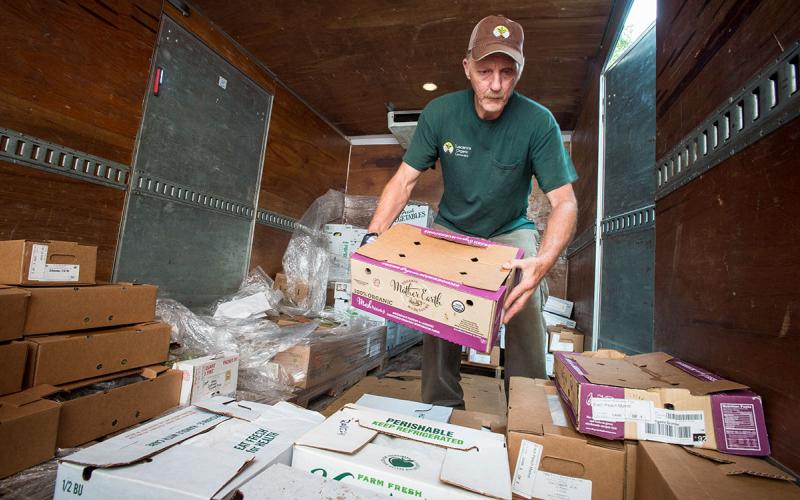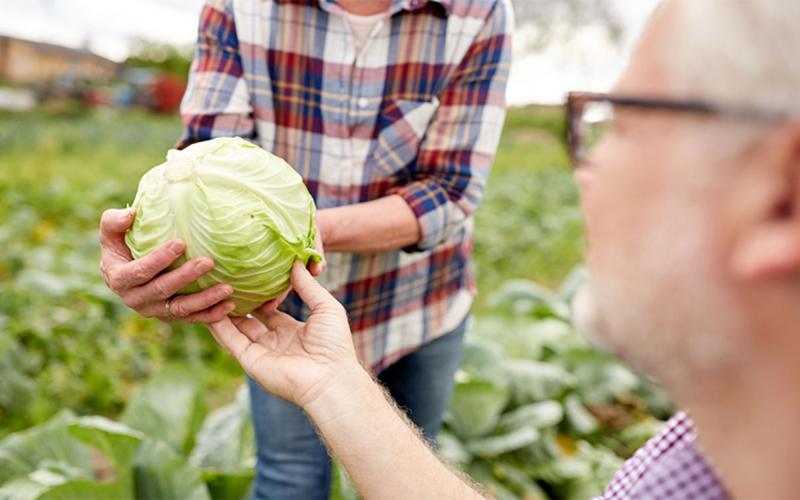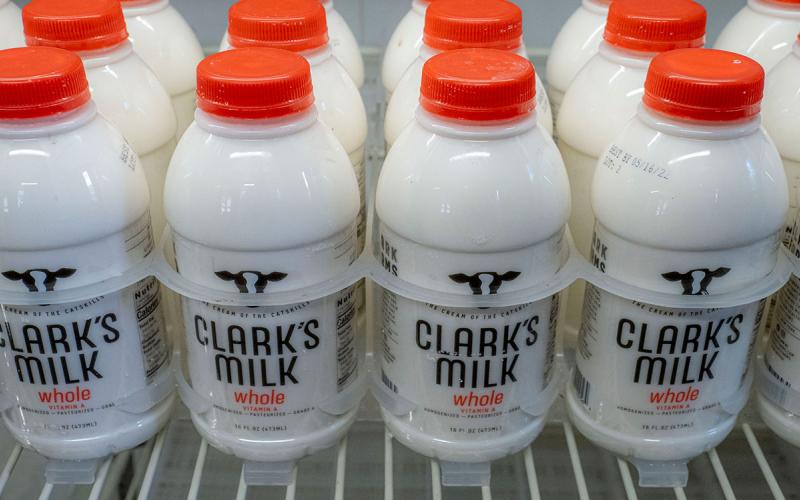Written by Sierra Blachford under the direction and review of Joan Hegerfeld-Baker (former SDSU Extension Food Safety Specialist).
Displaying food and produce safely requires attention to reducing the risk of contamination. Place produce on clean, sanitized tables or stands rather than the ground. If necessary, some large or heavy items, such as pumpkins, can be placed on a clean plastic tarp or in a clean food storage container on the ground. Produce that will be eaten uncooked should not be placed at ground level. Displaying food in plastic tubs is a good way to maintain food safety, and is also good for your business.
Produce
Watch over your stall at all times; prevent contact with produce and other foods by customers, including small children and pets. Keep produce in the shade if possible. If the area does not have shade, consider setting up a tent or canopy to prevent the produce from heating up and dropping in quality.
Baked Goods
Before arriving at the market, individually wrap baked goods such as bread or cookies. If the items will be sold in a group, consider placing them on a paper plate and wrapping the plate with cellophane. This will help protect the baked goods and prevent contamination.
Fresh & Frozen Meats
Most meat is sold as frozen food products at farmers markets. They should be maintained as a solid frozen product at a temperature of 20° F or colder. If you are selling frozen meat products, encourage your customers to bring a cooler and ice to the market. Suggest that they make your booth their last stop of the day, reminding them to move their meat products to a freezer as soon as possible. In the late summer, meat will stay frozen 1½ to 2 hours in a cooler if it is completely frozen and wrapped. Offer to hold the customers’ purchases in your cold storage until they are ready to leave the farmers market. If meat products are being sold fresh, they should be held at a refrigerated temperature of under 40 °F.
It can be difficult to display both fresh and frozen meat products, because customers often want to see the product. It is challenging to display meat products while keeping them at the proper fresh or frozen temperature. To overcome this challenge, consider investing in high-quality product photos and displays. This will help keep the products safe. Always place the meat in a clean plastic bag with handles, so that it does not contaminate other produce that the customer may have purchased.
Food Samples
Giving out samples can be an effective tool for introducing customers to new produce or food items and can help increase sales. However, from a food safety standpoint, there are issues to consider.
Meals Requiring Temperature Controls
Cleanliness, cooking, cooling and not contaminating are critical items to consider when preparing and serving foods that need to be temperature controlled. Vendors preparing or serving foods that require temperature controls must adhere to the South Dakota Food Code regulations.
Donating Produce
Vendors may have unsold produce at the end of a selling day. Handling this produce can be a challenge, because the fresh, high-quality products may not hold over until the next market day. Consider coordination with a local food bank so vendors can donate unsold produce while it is still in good condition. Be sure all who handle the produce follow recommended food safety practices, including washing their hands and using suitable containers that are clean and intended for food.
Through implementation of recommended safe food handling guidelines and following their food safety plan, farmers market growers and markets should feel secure that they are using “best practices” for a safe food supply.


